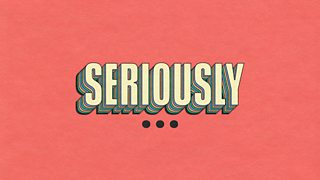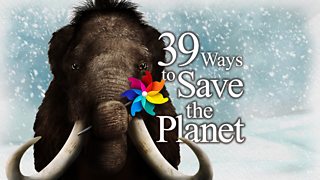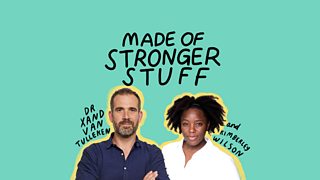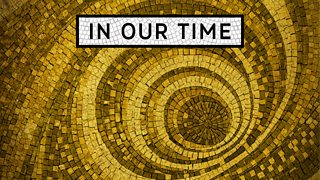Has drag become mainstream?
With RuPaul’s Drag Race UK amassing viewing figures in the millions, it wouldn’t be unreasonable to suggest that drag has sashayed into our collective conscience in recent years.
Does this mean the once subversive movement has become mainstream?
In the latest episode of Tricky, Drag Race UK stars Ellie Diamond and Lawrence Chaney, Cheddar Gorgeous, a drag mentor on Channel 4’s Drag SOS, and Alice Rabbit, host of Edinburgh’s The Rabbit Hole show, discuss just that.
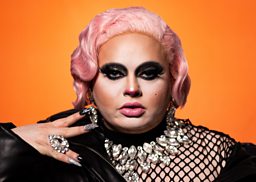
-
![]()
Listen to Tricky
Hear the full story – four drag queens talk about the rise of drag.
Where would drag be without RuPaul?
If you don’t frequent drag cabaret nights and shows, RuPaul’s Drag Race might have been one of your first introductions to the wonderful world of drag. Ru has provided an incredible platform to showcase new and established talent, and it has become a career goal for many queens. Would drag be where it’s at without Ru? Cheddar Gorgeous suggests that Ru and his show have “created opportunities that were simply not there before for drag performers.” Yet in doing so, it has transformed aspiring drag queens’ definition of success within the industry and caused an influx of new queens vying for space on the scene, Cheddar suggests. “What you end up with is less opportunity for the mid-range, the people who want to have a career without necessarily going on the show.” Alice agrees, describing it as a “sport”, with performers becoming increasingly competitive.
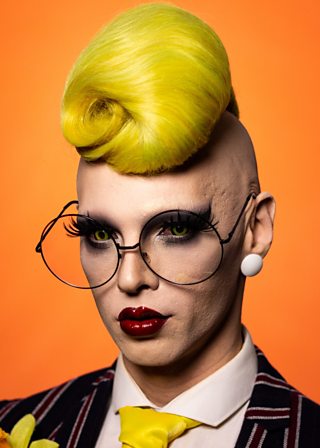
Aiming for Fame
Reasons for pursuing drag have changed in recent years with reality TV stardom becoming the ultimate goal for some drag queens. Ellie Diamond, for instance, grew up watching Drag Race on TV. Ellie, who reached the final of Drag Race UK, explains that securing a spot on the show was always her dream. “I was [one of those] younger kids that watched drag race that wanted to do that for the fame and everything else that comes along with it. I found through that, that it’s not all been for the fame or the money, it’s more (about) creative outlets.” She says that now, many queens start with the dream of glittering success and through that discover their own forms of self-expression. Before, however, the gateway into drag came from other means, such as the desire to join a community or perform, or to find yourself through experimenting with fashion, make-up artistry and hair styling.
Lawrence recalls talking to a young queen who asked her how to break into the scene, and how much they would be paid for doing so. Lawrence ponders: “There’s really not much [money] in it! Do you want to do it because you want to meet like-minded people? Do you want to do it because you want to up your game or your hairstyling skills, to put them to the test and perfect those? I find it’s a lot more difficult now to judge that difference between doing drag for money/fame, and doing drag for self-expression.” Lawrence acknowledges that both she and Ellie have now been set apart from other queens, and are viewed instead as reality television stars.
The real pleasures of drag
Cheddar’s happiest time in drag was when earning the least money from it, because there was “no pressure”. Now, Cheddar has been working professionally in drag for a decade, yet still has a side-hustle to ensure the bills are paid each month. “If you fixate too much on that image of success and fame, you end up missing out on where the real pleasures of drag are, which comes through the self-expression, the friends you make, the communities you build, the moments of absolute fantasy and excess. It doesn’t matter whether you’re performing to 2000 people or 20 people. This is about allowing something that is in you to get out there and be seen, and be loved for it.”
The mainstream grabs the bits that it recognises
Many of us have used programmes such as RuPaul’s Drag Race as the building blocks for our understanding of drag. Cheddar suggests that this means only some aspects of drag have become mainstream, while others have been branded as “alternative”. “You see a certain image of success reflected back from drag. The real issue is the way that that can sometimes come to define the entire thing about drag. It tends to be drag that still conforms to the binaries that we see dominating society.”
Lawrence agrees. “Drag is more mainstream the more black-and-white it is.” With television popularising certain aesthetics and performance styles, many non-conforming performers are missing out on airtime. Lawrence is not keen on “alternative drag” as a phrase to describe the aesthetic that doesn’t match what we see on air: “Drag is alternative, people that didn’t fit in back in the day did drag because they didn’t want to fit in.”

The case for a more inclusive drag scene
Alice, Cheddar, Ellie and Lawrence all agree that the drag scene needs to diversify to better represent the whole gamut of performers, such as trans women and those who were assigned female at birth.
At its core, drag is connection. Drag is about using spectacle to connect with groups of people.
“There are much more talented performers out there that aren’t given that platform just because of their gender,” reflects Ellie. Cheddar calls this “vagina fear” and wants to see the amplification of women performing both as drag kings and in femme drag: “It is one of the most interesting and exciting parts of drag. It has the potential to disrupt how we perceive feminine beauty and the expectations we place on women to be beautiful all the time.”
Ellie feels that drag should all be “meshed together”, rather than having “men in dresses” as the standard, with only occasional, exceptional shows promoting a more inclusive roster of performers. Alice, who hosts drag nights in Edinburgh, is all too familiar with this set up. After hosting dedicated king nights at The Rabbit Hole show, Alice realised “I had to stop making it like ‘we’re doing a king night because it’s special’. Just integrate everybody into the same show.”
Drag is Connection
Elements of drag may well have made their way into the mainstream, but so-called “alternative” performers are still awaiting the chance to have an equal platform. Many local club scenes have diverse line ups, yet these are not represented on a grander scale. As Cheddar says, “at its core, drag is connection. Drag is about using spectacle to connect with groups of people.” When spectators engage with a more diverse range of performers, that connection will surely strengthen.
More thought-provoking conversations
-
![]()
Seriously...
Seriously is home to the world’s best audio documentaries and podcast recommendations, and host Vanessa Kisuule brings you two fascinating new episodes every week.
-
![]()
39 Ways To Save The Planet
91�ȱ� Radio 4, in partnership with the Royal Geographical Society, presents 39 ideas to relieve the stress that climate change is exerting on the planet.
-
![]()
Made Of Stronger Stuff
Our bodies reflect change in the world around us. Psychologist Kimberley Wilson and Dr Xand van Tulleken ask - one body part at a time - how much control do we have?
-
![]()
In Our Time
Melvyn Bragg and guests discuss the history of ideas

